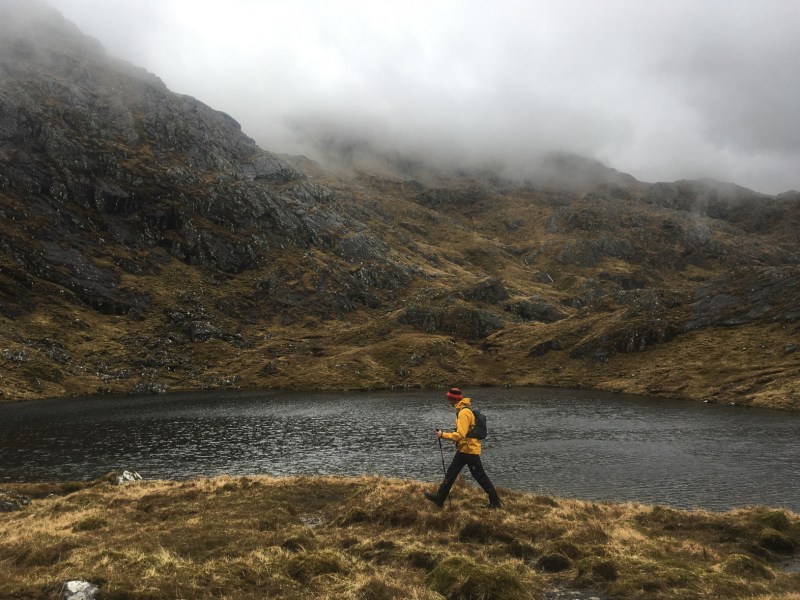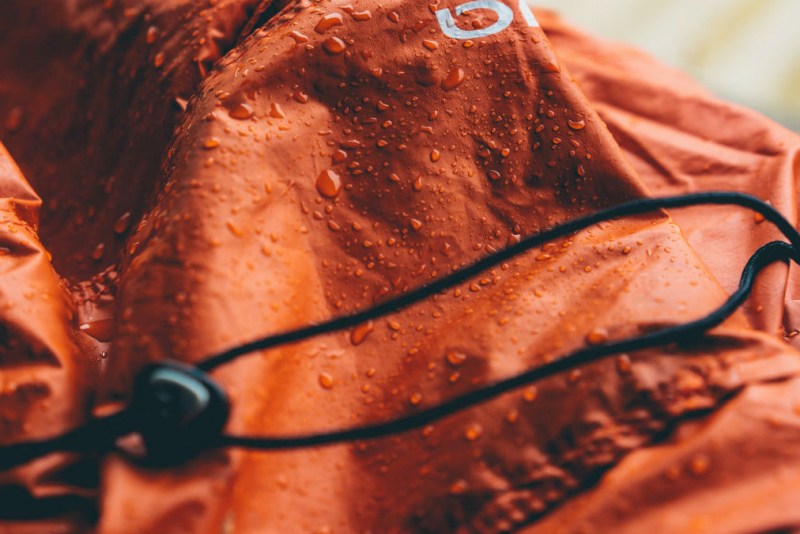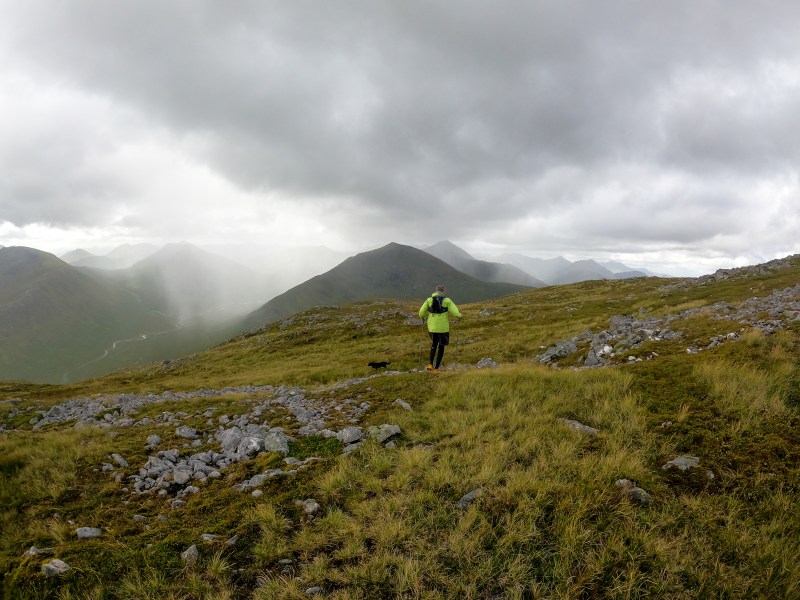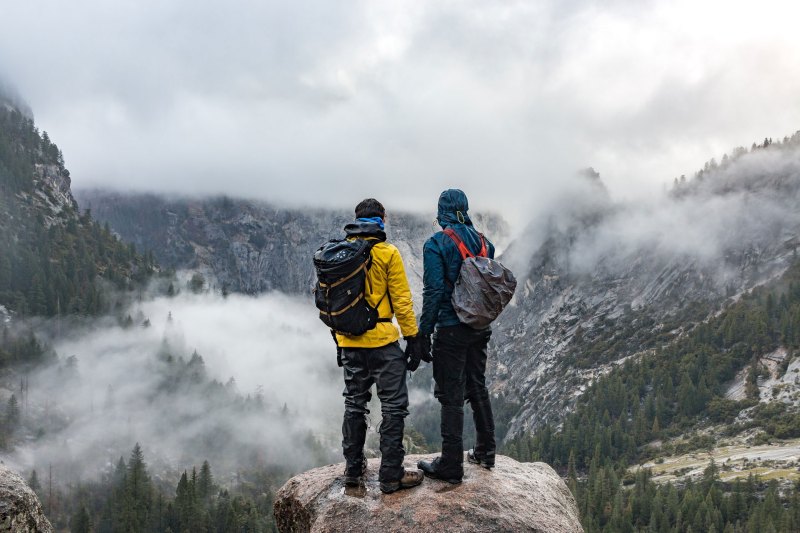
Gore-Tex. It’s become the brand name synonymous with waterproof outdoor gear. Sure, other brands offer the same thing — eVent, for example — and increasingly, brands are making their own, but Gore-Tex is still the market leader; there’s no denying that. However, with great power comes great responsibility — not to mention a hefty price tag. In this sense, Gore-Tex’s responsibility is to keep you dry.
That’s what Gore-Tex promises: Waterproof and breathable materials, but it just doesn’t match up. You spend hundreds of dollars on a Gore-Tex waterproof jacket, only to find a few months down the line that you’re finishing your hike almost as wet inside as you would be without it. Sure, some of this is bad luck or manufacturing faults; always be sure to check your warranty, as it could be worth it. Sometimes, though, it might just be that all that glitters isn’t gold, or perhaps those naysayers on forums worldwide are expecting a little too much from their outdoor gear. I’ve hiked, ran, skied, backcountry snowboarded, canoed, and done just about everything else you can imagine in Gore-Tex layers, and I’ve learned a lot along the way.

What is Gore-Tex, and how does it keep you dry?
I’ll start this by debunking a myth: The Gore-Tex membrane is, in fact, completely waterproof. This membrane, made from expanded PTFE — the same PTFE that gives your frying pans such a great nonstick coating — has billions of tiny pores, each of which is around 20,000 times smaller than a water droplet, but importantly, several hundred times larger than a water vapor molecule. This means that while rain molecules can’t permeate the membrane, water vapor — sweat — can. This is what makes the material breathable.
Gore-Tex is just a membrane. When you see a Gore-Tex jacket on the shelf, all this means is that the membrane is fitted to a standard certified by Gore-Tex itself. This includes the fact that the company is using proper Gore-Tex sealing tape and machines that seal this all off properly. If not for that tape, your fancy jacket would spring a leak at the seams. What Gore-Tex doesn’t certify is any other feature of the jacket. That’s all up to the companies themselves.

Why doesn’t your Gore-Tex jacket always keep you dry, then?
We’ll get into climates in a moment, as well as some of the more technical aspects of how Gore-Tex works. For now, we’ll try to demystify why you get wet inside your Gore-Tex jacket.
First, breathability has its limitations. Even the best sweat-resistant, moisture-wicking merino layers get sweaty when we work hard, so why do we expect so much from a jacket that’s also working hard to keep us dry? Sure, those pores are big enough to let moisture out, but if you sit in a steam room and crack a window slightly, the steam will take time to clear, especially if you’re still generating it.
Then there’s the external layer of your jacket. The face fabric of your best-in-class men’s waterproof jacket beads beautifully in the first few rain showers. That is, the water runs off as droplets rather than soaking into the fabric. This is done deliberately because as moisture forms on the outside of the pores, it blocks the ventilation and forms a breathability barrier. The same happens with dirt, salt from your sweat, and the sort of general grime that builds up from wearing your jacket.
In short, you need to wash your jacket and re-waterproof that outer fabric to keep things breathable by using specialist outdoor cleaners like Nikwax Tech Wash. Even if you don’t feel like you’re working hard on the trail, you’ll be sweating. If that sweat has nowhere to go, it will soak you through, making you feel as though your jacket is leaking.

What climates do Gore-Tex work best in?
If you think of breathability as the transfer of warm, wet air to cool, dry air, then this question pretty much answers itself. For maximum breathability, the air outside the garment needs to be noticeably drier than the air inside the garment. This is true for all material breathability, by the way, not just Gore-Tex. This means that in humid conditions, where the air is heavy with moisture, your Gore-Tex jacket will struggle to effectively remove water vapor from your body. In conditions like this — rainforests, for example — you’re almost always going to get wet, no matter what you do.
Gore-Tex is best used in a dry, cool environment. That’s why it’s so popular with skiers and snowboarders. A little breeze also won’t go amiss. In these environments, even a heavy downpour won’t leave the air feeling heavy and humid, and your jacket will still be able to manage your moisture. I will refer you to the earlier statement, though: Breathability has its limitations. I’ve been out for runs in Gore-Tex gear on cool, breezy days and have gotten soaked in sweat, but I expect that’s because I’m working hard and generating a lot of moisture.

Is Gore-Tex gear worth the money?
To my mind, yes, it is, but lower your expectations to align with reality a little here. I agree with some reviews of gear that some layers just don’t hold up to use and that some outdoor brands are prohibitively expensive for what they produce, but I blame that on the brands and their use of Gore-Tex, not the membrane itself. As well as maintaining your Gore-Tex jacket by cleaning it and drying it properly after using it, you can give it a better chance by wearing proper moisture-wicking layers underneath it. If your base layer and mid-layer don’t wick effectively, how can you expect your outer layer to deal with the backlog?
For me, I stick with Gore-Tex. I’ve also used eVent and other membranes with success, but I’m a little wary of brand-own waterproofing until it’s proven. That said, I’m also aware that I run hot when I’m outside and accept that this means I get moisture build-up that goes beyond what I expect my jacket to deal with. The balance here is twofold. I find that Gore-Tex generally keeps me dryer than I would be without it — not to mention that I would freeze from the strong winds that accompany most rainfall where I live. Once the rain finishes, Gore-Tex does a great job of wicking away moisture and drying me out for the rest of my hike. I’m a believer in the Gore-Tex hype, but I’m also a realist, and I recommend you join my club.

Outdoor gear brands with Gore-Tex
There are several quality outdoor brands that make men’s waterproof jackets with Gore-Tex. Here are some of the most popular ones to consider:
- Arc’teryx
- Patagonia
- The North Face
- REI
These are just a few of the many great rain gear brands that use Gore-Tex. When choosing rain gear or waterproof jackets, it’s important to consider your needs and budget. If you’re looking for the most durable and waterproof rain gear, we suggest Arc’teryx, Patagonia, and the North Face. If you have a tighter budget, REI is the way to go, but still an excellent choice.
Editors' Recommendations
- Everyone needs to know how to hang a bear bag, including you
- 8 healthy benefits of hiking you need to know
- Keep your digits defrosted this winter with these gloves and mittens
- If you like skiing or snowboarding, you need to update your iPhone immediately – here’s why
- The best way to travel with a snowboard or skis affordably



